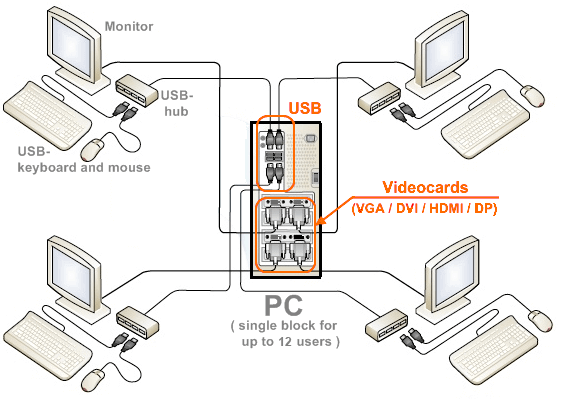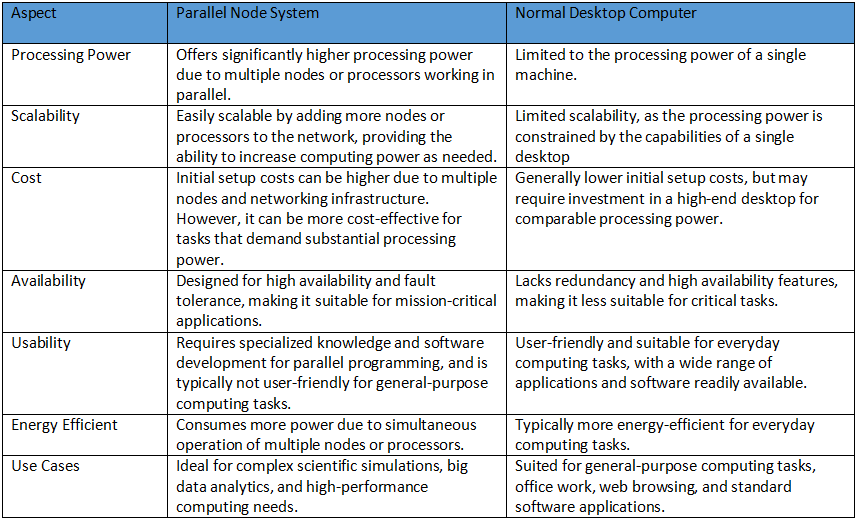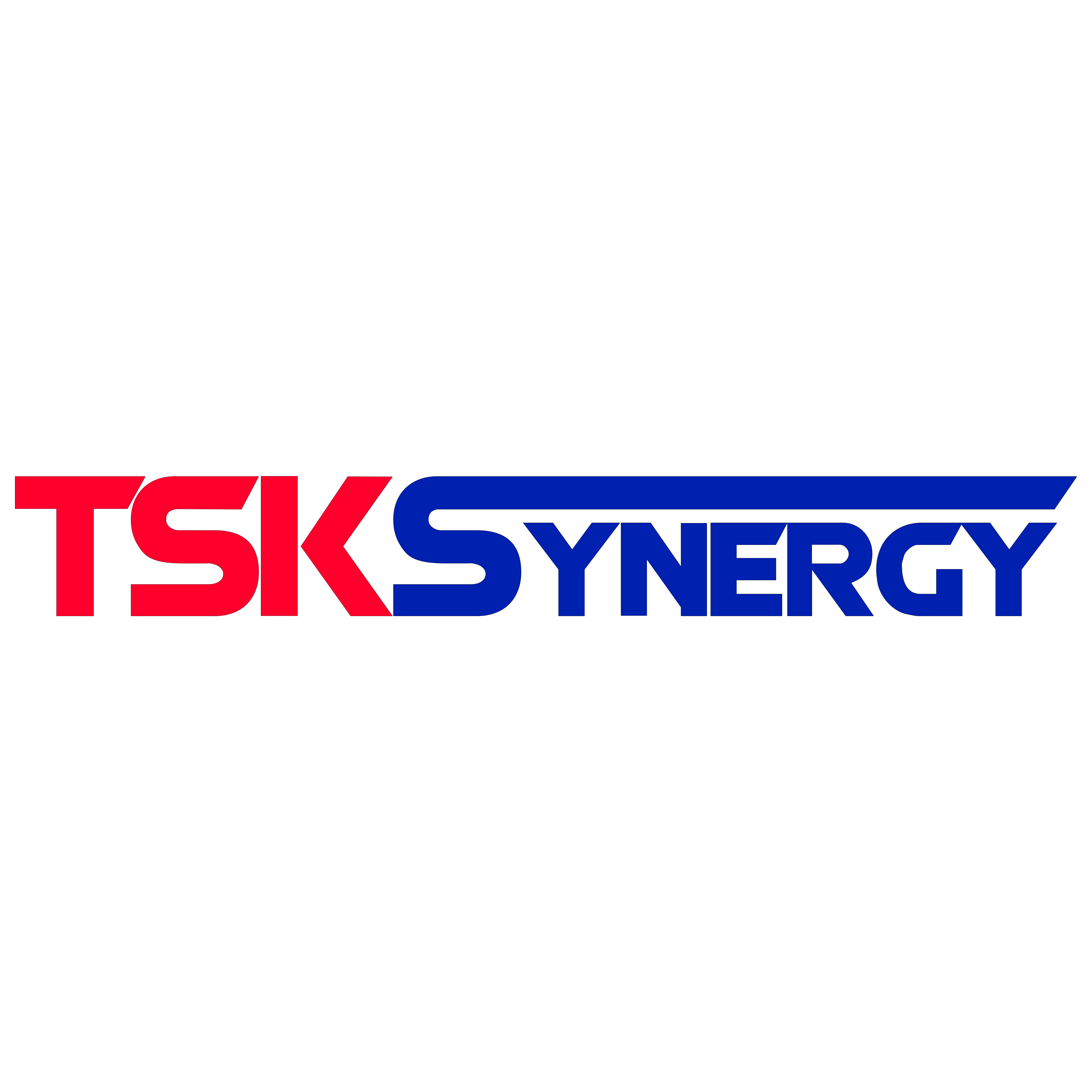Parallel Node System (PNS)
We provide advanced parallel node systems, leveraging high-performance computing (HPC) and parallel processing, with versatile applications spanning scientific research, engineering, finance, entertainment, and healthcare. Our solutions unlock the potential of multiple interconnected computing nodes working in parallel to efficiently tackle complex computational challenges. We prioritize cost reduction by optimizing existing hardware resources, enabling organizations to build clusters of commodity servers and extend hardware lifespans. Furthermore, our expertise in parallel computing includes leveraging open-source software and tools, effectively reducing licensing expenses and overall software infrastructure costs. Our offerings empower organizations across various fields to enhance computational performance while maintaining cost-effectiveness, making parallel node systems an attractive choice for a wide range of applications.

The diagram illustrates a centralized computing setup where a single powerful computer, acting as a server, connects to four sets of computer users through a USB hub. Each set of users has their own individual thin client computers, which rely on the central server for processing and storage. Monitors for the users are connected to the central server via dedicated video cards using various display interfaces. This architecture enables resource sharing, where the central server handles computing tasks for multiple users, making it a cost-effective and scalable solution suitable for scenarios like virtual desktop infrastructure (VDI), offering centralized management, hardware savings, and adaptability for varying workloads.
Advantages
The advantage of using a parallel node system lies in its ability to harness the combined processing power of multiple nodes or processors, delivering significantly enhanced computational performance. By executing tasks in parallel, it reduces processing time, making it ideal for complex simulations, data-intensive analytics, and high-performance computing needs. Moreover, its scalability allows for the seamless expansion of computing resources as demands grow, and the system offers high availability, fault tolerance, and efficient resource utilization, making it well-suited for mission-critical applications. While initial setup costs may be higher than a single desktop, the long-term cost-effectiveness and efficiency for demanding workloads make parallel node systems a preferred choice in scientific research, big data analysis, and other computationally intensive fields.








